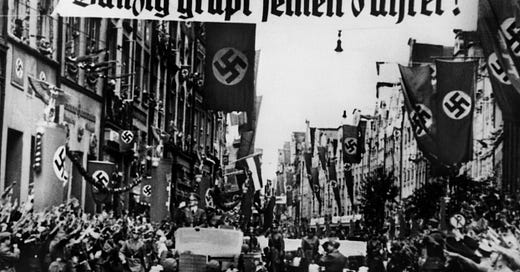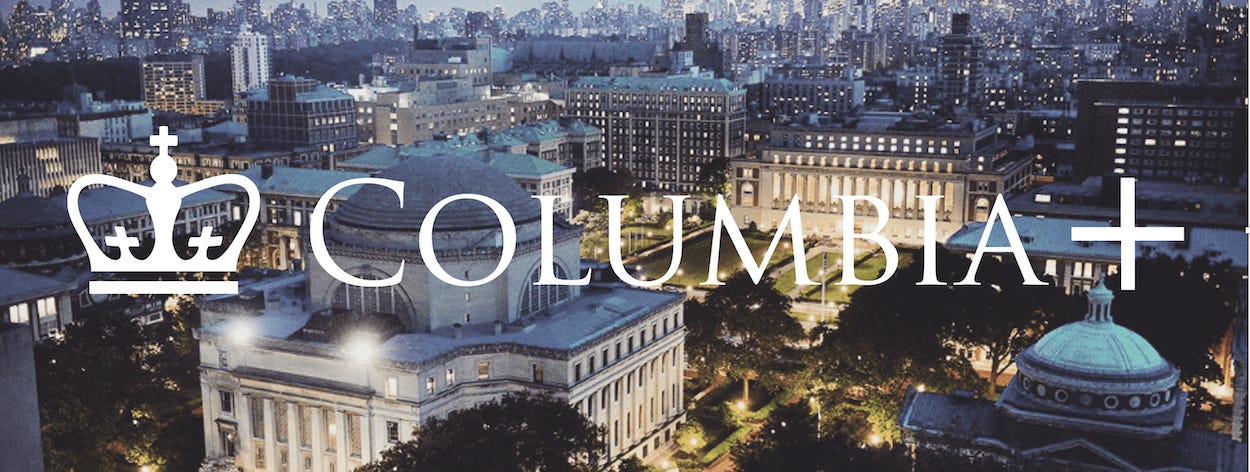The Holocaust Began With Mass Murder of Non-Jewish Polish Professors
Before the Nazis Came for the Jews, They Came for the Professors
There is a tendency—particularly among Americans—to think of the Holocaust as beginning in 1941 with the Final Solution or, more commonly, with the opening of Auschwitz. That’s understandable. The Shoah is remembered for what it ultimately became: the systematic murder of six million Jews. But the Nazis' war against humanity began earlier, and in ways that foreshadowed everything that followed.
It started in Poland. And before the Nazis came for the Jews, they came for the professors and student “radicals.”
In the fall of 1939, following Germany’s invasion of Poland, the Nazis launched a series of operations aimed at decapitating Polish society by eliminating its intelligentsia—those people most capable of inspiring resistance. Professors, students, teachers, clergy, writers, and other community leaders were arrested, deported, and, in thousands of cases, executed.
The operation was planned well in advance. German security forces had compiled long lists of prominent Poles—among them many academics—to be targeted as soon as the invasion began. The campaign, known as Operation Tannenberg, soon expanded into a broader action called the Intelligenzaktion, or “Intelligentsia Action.” These were not euphemisms. They were extermination orders.
The most infamous incident occurred on November 6, 1939, in Kraków. The Nazis summoned the entire faculty of the Jagiellonian University—the oldest and most prestigious university in Poland—to what they claimed was a routine administrative meeting. It was a trap. One hundred eighty-three professors and staff were arrested on the spot. Among them were internationally renowned scholars in law, medicine, philosophy, and the sciences. They were imprisoned, then deported to the Sachsenhausen and Dachau concentration camps. They never came back.
Across Poland, similar purges followed. Universities were shut down or repurposed for the use of the German occupiers. Professors were rounded up, libraries ransacked, research destroyed.
To the Nazis, education was not a threat because it produced ideas. It was a threat because it produced identity—national, cultural, and personal. The professor in a university, the teacher in a village schoolhouse, the priest in a pulpit, and the writer with a pen: all were enemies because they gave people the means to resist.
There is a Jewish story here too. Not just because some of the victims were Jewish but because what happened to the Polish universities foreshadowed what was soon to happen to all Jews under German rule. Before the Nazis began deporting Jews to death camps, they honed their tactics on the Polish elite: arrest lists, deception, sudden raids, deportations, and mass executions. They destroyed synagogues and yeshivas alongside secular and Catholic universities. They practiced on Poland’s intelligentsia what they would later inflict on all of Europe’s Jews.
And yet the professors resisted. Not with weapons, but with classrooms. Underground universities sprang up throughout occupied Poland, where faculty continued to teach in secret. The "Flying University" in Kraków and the covert courses in Warsaw are legendary examples of intellectual defiance. These were acts of enormous bravery; discovery often meant death. But they taught anyway. Because knowledge—even when whispered in basements—was resistance.
By war’s end, it's estimated that one-third to one-half of Poland’s professors had perished.
Today, when we remember the Holocaust, we must also remember its grim prelude: the calculated murder of a people’s educators, thinkers, and truth-tellers. The Nazis understood what we often forget—that ideas can be dangerous to tyranny, and that the classroom can be as threatening to fascists as any battlefield.
In a time when the Trump administration is targeting universities and colleges, with special emphasis on the most elite, and when truth is once more treated as subversive, the story of Poland’s murdered professors feels less like distant history and more like a warning of what may be coming.
There is, however, one striking difference between the Nazis attack on Polish universities and Trump’s here in the United States. Hitler never rationalized his actions by saying he was targeting Polish universities to defend Jews on campus (and there were thousands) against antisemitism! Although he invented the “big lie,” that lie was too big even for him. Trump, Vance, Musk, and Stephen Miller could teach him a few things.







In “Sophie’s Choice”, William Styron told the very same story, how Sophie’s father and husband were university professors and were shot as part of the Nazi invasion of Poland rapidly followed by deliberate crushing of the people through starvation, imprisonment, and savagery throughout. Many people are unaware of the War against the Church with tens of thousands of religious put in camps to destroy the souls and intellects of the Polish people. A common claim of the Nazis was that Slavic peoples only needed enough reading skills to read “Berlin is the capital of the Reich.”
And before they came for the professors they came for Magnus Hirschfeld, burned his library and went after gay and trans people. https://www.smithsonianmag.com/history/new-research-reveals-how-the-nazis-targeted-transgender-people-180982931/